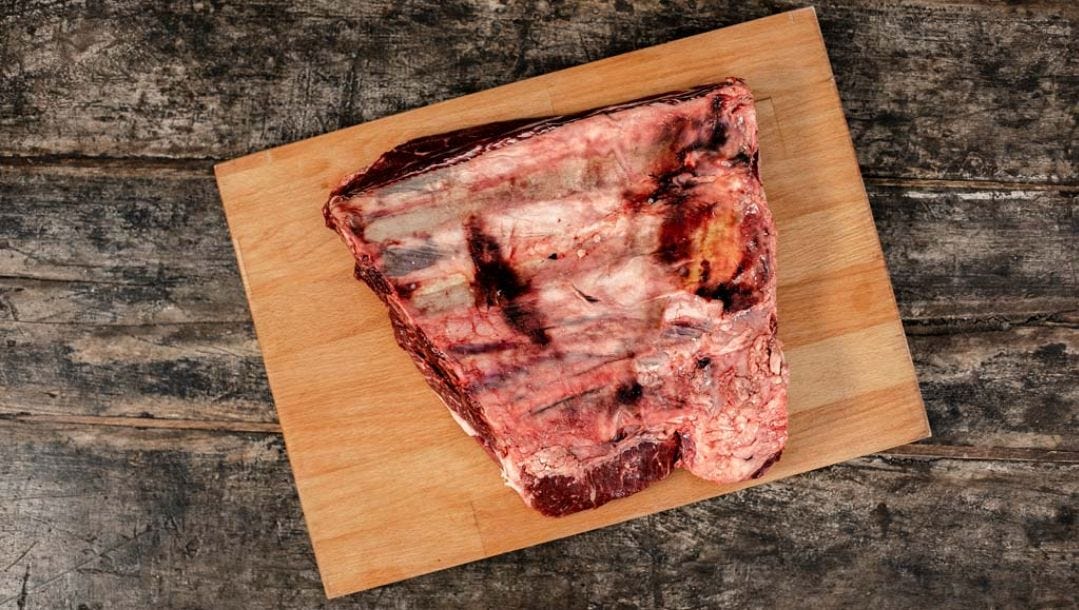Beef Ribs
Beef Ribs
For the longest time, beef rib was just another soup meat, until the great reputation of BBQ in the United States gave it a new image in the rest of the world too. In the USA, ribs have been part of the “Holy Trinity” of American barbecue culture for decades. However, beef ribs are not for fussy eaters. They are one of the more rustic cuts, which means you have to get your fingers dirty when eating. Using cutlery would simply be out of place here.
Directions
The international terms
- Germany – Querrippe/Zwerchrippe/Kotelettrippen
- Austria – Rinderrippe/Rindsrippen
- France – Tête de Boeuf
- Italy – Costola del Bestiame
- UK – Ribs
- USA – Beef ribs
What is the difference between spare ribs and short ribs?
Classic spare ribs typically come from the lower part of the pork rib, but there are also versions with beef. Beef ribs usually come from the upper rib section of the cow and are still misjudged as only being worthy of soup meat. They offer a much more intense taste sensation than pork ribs.A meatier alternative is beef short ribs – they originate from between the front chest area, from which beef brisket is also taken, as well as the rear flank section of the animal. But don’t be fooled by the name, as this is a fairly enormous cut from the rib. The silver skin should be removed on the bone side. The beef flank from which the cut originates is also known as short plate and is the eponym for short ribs. They are rather coarse-grained and have a robust flavour of their own, which harmonises well with the strong smoky flavour provided by the smoker.
How do I get beef ribs particularly tender?
No matter which version of beef ribs you choose – both have a high connective tissue content and are correspondingly tough and stubborn when raw.- Low and slow: To counteract this, you need to draw on the well-established BBQ method of low and slow The meaty ribs are cooked gently in the smoke at a comparatively low temperature and over a period of several hours.
- Smoker: One option that is perfectly equipped for the preparation of ribs, for example, is The Big Easy. The smoker comes with rib hooks so that the ribs can be conveniently suspended in the cooking chamber.
- Smoker chips: Depending on taste, smoker chips made from apple wood or hickory can create a particularly wonderful aroma.
In addition, an acidic marinade also helps to make the meat nice and tender until it almost peels off the bone. Why does this work? The acid helps the meat to speed up the breakdown of protein.
After smoking, the beef ribs are also steamed for one to two hours at a constant temperature to break down any remaining resistance in the connective tissue and to transform it into tender, melting gelatine.
Can beef ribs also be prepared in a different way?
Anyone lacking the right equipment, or who simply wants to try out a recipe that goes beyond the smoker, can simply prepare and cook the beef ribs on a gas grill or charcoal grill. When using a grill, however, it is important to ensure that the beef ribs do not dry out. This works best if you keep pouring a slightly sweetened liquid over the meat. The resulting steam protects the food from drying out and, at the same time, forms a caramelising glaze. This makes the ribs perfect all over – crispy on the outside, while juicy and tender on the inside.Of course, the cooking time will not be below six to eight hours with either method. But the meat should at least have reached a core temperature of 95°C in order to develop all its tenderness and a full-bodied aroma. Close monitoring of the core temperature is, therefore, a must when smoking. To do so, a digital thermometer can be helpful.

